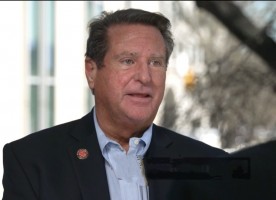Hair loss is a common concern affecting millions of people worldwide. Whether due to genetics, hormonal changes, stress, or medical conditions, thinning hair can impact self-confidence and quality of life.
While many treatments claim to restore hair, Platelet-Rich Plasma (PRP) therapy has gained significant attention as a natural and effective solution. But what exactly is PRP, and how does it work? Let’s explore the science behind PRP for hair growth and why it’s considered a breakthrough treatment.
PRP Therapy
Platelet-Rich Plasma (PRP) therapy is a non-surgical treatment that uses a patient’s own blood to promote healing and stimulate hair growth. The procedure involves:
Blood Draw – A small amount of blood is taken from the patient’s arm.
Centrifugation – The blood is placed in a centrifuge, which spins rapidly to separate the platelets from other blood components.
Injection – The concentrated platelet-rich plasma, rich in growth factors, is injected into the scalp in areas experiencing hair thinning.
These growth factors play a crucial role in tissue repair, wound healing, and, most importantly, stimulating hair follicles to enter an active growth phase.
How PRP Works for Hair Growth
Stimulating Dormant Hair Follicles
Hair follicles undergo growth cycles, including an active phase (anagen), a resting phase (telogen), and a shedding phase (catagen). In people experiencing hair loss, many follicles remain in the resting phase, leading to thinning hair.
PRP’s high concentration of platelets and growth factors helps:
Wake up dormant follicles
Extend the growth phase (anagen)
Reduce hair shedding
Increasing Blood Supply to the Scalp
One of the key causes of hair loss is poor blood circulation to the hair follicles. PRP injections improve blood flow, delivering essential oxygen and nutrients that support follicle health and hair growth.
Reducing Inflammation & Preventing Hair Loss
Conditions like androgenetic alopecia (pattern baldness) involve inflammation that weakens hair follicles. PRP contains anti-inflammatory proteins that help create a healthier environment for hair to grow.
Strengthening Existing Hair
PRP doesn’t just regrow hair—it also improves the thickness and strength of existing hair. This makes it an excellent option for people with early-stage hair thinning.
Scientific Evidence: Does PRP Really Work?
Several clinical studies have examined the effectiveness of PRP for hair growth:
A 2019 study in the International Journal of Molecular Sciences found that PRP injections significantly increased hair density and thickness in patients with male and female pattern baldness.
A 2020 review published in Stem Cells Translational Medicine reported that PRP treatments improved hair count, hair thickness, and follicle survival compared to placebo treatments.
A 2021 study in Dermatologic Surgery concluded that PRP outperformed minoxidil (Rogaine) in promoting hair regrowth over six months.
These findings suggest that PRP is a promising treatment for hair restoration, especially for individuals in the early stages of hair loss.
Who is a Good Candidate for PRP Hair Therapy?
Men and women with early-stage hair thinning
Those with androgenetic alopecia (pattern baldness)
People looking for a natural, drug-free solution
Patients who want to improve the results of a hair transplant
PRP may not be as effective for completely bald areas or individuals with severe scarring on the scalp. Consulting a hair specialist can help determine if PRP is the right option.
What to Expect During PRP Treatment
Procedure Time: 45-60 minutes
Pain Level: Mild discomfort (numbing cream is often used)
Downtime: Minimal; resume normal activities within a day
Sessions Needed: 3-4 sessions spaced 4-6 weeks apart, with maintenance every 6-12 months
Some patients notice reduced hair shedding after the first session, while visible hair growth usually appears within 3-6 months.
Potential Side Effects and Risks
Since PRP is derived from the patient’s own blood, it is generally safe with minimal risks. However, some possible side effects include:
Mild scalp tenderness
Temporary redness or swelling
Slight headache after injections
Rare complications include infection or allergic reactions, but these are uncommon when performed by a trained professional.
Is PRP the Future of Hair Restoration?
PRP therapy is a scientifically backed, natural, and effective treatment for hair loss. By stimulating dormant follicles, improving blood flow, and reducing inflammation, PRP offers a non-surgical solution for those looking to restore their hair.
If you’re struggling with hair thinning, consult a hair specialist to see if PRP could be the right solution for you. With ongoing advancements in regenerative medicine, PRP is proving to be a game-changer in hair restoration!











